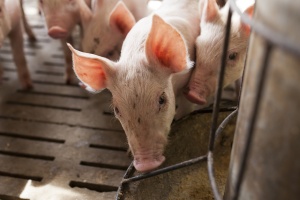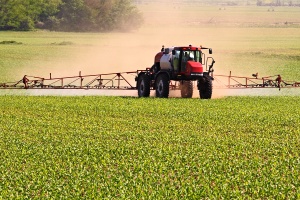Understanding beef labels: what they mean for you and your family
On a trip to the grocery store, you probably see more meat labels than you can count—labels that can often be confusing. When it comes to beef, there are a few labels you might see more frequently. These labels are meant to tell us a little bit about how the cattle that beef came from were raised, but it’s not always clear what that means for us and our families.
Here’s an easy-to-understand breakdown of what these labels meant for the cattle and what they mean for you and your family:
Grass-Fed or Grass-Finished Beef
Even though all cattle spend most of their lives eating grass on pastures, the food label “Grass-Fed Beef” should inform the consumer that the cattle were fed grass or forage after weaning until they were harvested. It does not distinguish where the grass came from or how they were fed. Cattle may graze on pasture or be fed in lots. Depending on the location and time of year, they may graze during parts of the year and get fed harvested forage during the colder months.
The labels “Grass-Fed” and “Grass-Finished” are overseen by FSIS, the regulatory labeling arm of the USDA that oversees animal-raising claims. Companies that use this label or claim are to provide documentation to support the label is accurate. The labels “Grass-Fed” and “Grass-Finished” do not indicate whether the cattle have been treated with antibiotics and/or growth-promoting hormones.
Grain-Finished Beef
This is also sometimes called “conventional,” as 80% of all beef in the U.S. is finished on a grain-based diet. Most cattle spend the majority of their lives eating grass or forage and then are finished on a grain-based diet for the last five months of life to increase weight and beef yield. The cattle generally reach their target weight sooner than their grass-fed counterparts.
This beef also tends to be higher in fat with more marbling and, therefore, is more likely to reach the Choice or Prime. Like grass-finished beef, grain-finished cattle may or may not have been treated with antibiotics and/or growth-promoting hormones.
Certified Organic Beef
Certified organic beef can either be grass-finished or grain-finished. “Organic” is a USDA certification that can be applied to beef consuming either diet as long as the USDA’s Agriculture Marketing Service (AMS) certifies the feed is 100% organically grown. The beef processors must also be certified organic. These cattle also have never been treated with antibiotics or growth-promoting hormones.
Naturally Raised Beef
Beef with the label “naturally raised” is beef that comes from cattle that never received any antibiotics or growth-promoting hormones. These cattle could have been either grain- or grass-finished and/or have spent time in a feedlot.
A note on antibiotics
If antibiotics are of concern, it’s important to note that even though grass-fed, grass-finished, and grain-finished beef may have been given antibiotics during their life, no antibiotic residue is left in the beef when it reaches processing. Illinois beef farmers rely on their veterinarians to provide the best care possible for their animals and, just like when you’re caring for your sick kid, that sometimes means using antibiotics. You can learn more about a veterinarian’s perspective on antibiotics here.
USDA Grades: Prime and Choice
All American beef is evaluated by USDA meat graders for food safety and quality. The USDA grade shields make it easier to understand the level of quality of beef products. You’re likely only to see the two highest grades at while shopping: prime and choice.
Prime is the highest-ranking quality grade for beef. It will have abundant marbling and must come from young, well-fed beef cattle. Choice beef is still high quality, just with less marbling than beef that has been graded Prime. Learn more about beef grading.
About marbling
Marbling refers to the small white flecks of fat scattered throughout the meat. These tiny flecks make a big impact, providing flavor, making the meat more tender and increasing the juiciness you might experience from a good steak. The more flecks in the meat, the more marbling in the cut and the better the eating experience.
Which type of beef is right for you?
So, why choose one type of beef over the other? Just like Illinois farm families choose what they believe is the best diet for their cows, it’s up to you to choose what type of beef is best for your family.
If you’re deciding what type of beef to buy based on nutrition, grass-finished beef tends to be leaner than grain-finished beef, but grain-finished beef typically has a fatty acid profile that is more conducive to better health outcomes. Across the board, nutrition experts agree that all beef essentially provides the same health benefits and is a natural source of 10 essential nutrients including protein, iron, zinc, and many B vitamins.
Hopefully, this information brings some clarity as you stroll through the market and decide which beef product is best for you. Learn more about other commonly used food labels.










0 Comments